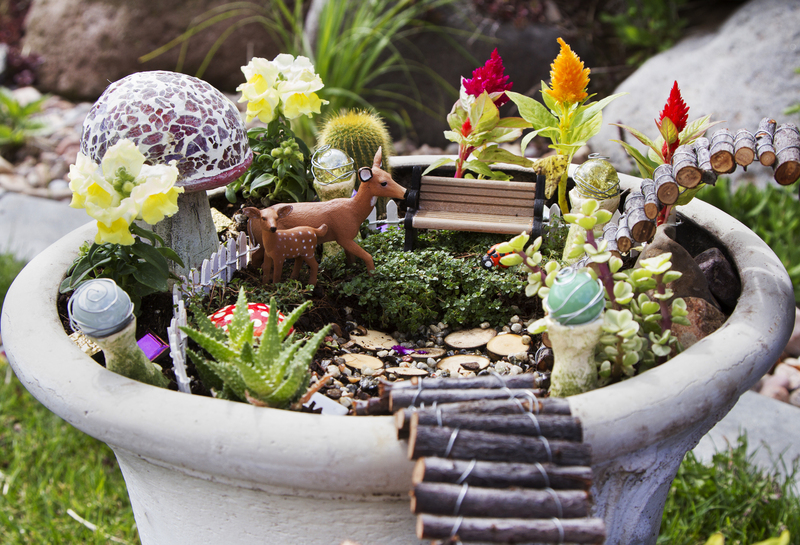Managing Your Lawn After Heavy Rainfall
Posted on 04/05/2025
Heavy rainfall can impact your lawn in various ways, from flooding and soil erosion to nutrient depletion and fungal growth. Managing your lawn after a downpour requires specific steps to ensure its health and longevity. This comprehensive guide will walk you through the essential strategies to restore and maintain your lawn after experiencing heavy rains.
Assessing the Damage
The first step in managing your lawn after heavy rainfall is to assess the damage. Thoroughly inspecting your lawn will help you understand the severity of the impact and identify the specific issues that need attention.
- Standing Water: Look for areas where water may have pooled. Standing water can suffocate grass roots and promote fungal growth.
- Soil Erosion: Examine the lawn for signs of soil erosion, such as exposed roots or washed-away topsoil.
- Fungal Growth: Heavy rainfalls create a humid environment that can lead to fungal diseases like brown patch or mold.
Taking note of these conditions will guide you in choosing the right corrective measures.

Improving Drainage
If your lawn experiences standing water after heavy rains, improving the drainage should be your first priority. Poor drainage not only affects grass health but can also contribute to long-term issues like mold and mildew.
- Aeration: Aerate your lawn to improve soil permeability. This process involves creating small holes in the soil to allow better air, water, and nutrient penetration.
- French Drains: Consider installing French drains or other drainage systems to redirect excess water away from your lawn.
- Gradation: Adjust the slope and elevation of your lawn to ensure water flows away from critical areas, such as your house foundation and garden beds.
Repairing Soil Erosion
Soil erosion can have lasting effects on the health of your lawn. Post-rainfall, it's essential to take steps to stabilize the soil and prevent further erosion.
- Mulching: Applying a layer of mulch can help to hold the soil in place and absorb excess moisture.
- Sod Installation: Sodding eroded areas with new grass can provide immediate soil stabilization.
- Planting Ground Cover: Ground covers like clover or creeping thyme can help to hold the soil together and prevent erosion.
These methods can enhance the soil's resilience, reducing the likelihood of future erosion from heavy rainfalls.
Dealing with Fungal Growth
Fungal infections are a common problem in lawns after periods of heavy rainfall. They can cause unsightly patches and weaken the grass, making it susceptible to other diseases.
- Fungicides: Apply fungicides specifically formulated for lawn care to combat fungal infections.
- Pruning: Trim back overgrown plants and trees around your lawn to improve airflow and sunlight exposure, which can help deter fungal growth.
- Water Management: Water your lawn early in the morning to give it time to dry out during the day, reducing the moisture levels that fungi thrive in.
Implementing these measures can help you manage and prevent fungal outbreaks effectively.
Replenishing Nutrients
Heavy rainfall can wash away essential nutrients from your soil, leaving your lawn looking dull and weak. Replenishing these nutrients is vital for the overall health and appearance of your lawn.
- Fertilization: Use a balanced fertilizer that contains nitrogen, phosphorus, and potassium. Apply it according to the manufacturer's recommendations to avoid over-fertilization.
- Organic Matter: Incorporate compost or organic matter into your lawn to improve soil structure and nutrient content.
- Soil Testing: Conduct a soil test to identify any specific nutrient deficiencies and address them accordingly.
Regular fertilization and organic matter enrichment can help restore the nutrient balance in your lawn.
Reseeding and Overseeding
Flooded and eroded areas can leave your lawn patchy and uneven. Rescuing these areas with new grass seed can promote uniform growth and improved aesthetics.
- Reseeding: For severely damaged areas, remove dead grass and debris, then apply grass seed. Cover it with a thin layer of soil or mulch to protect it from washing away.
- Overseeding: For less damaged but thin areas, overseed to thicken the existing grass. This process can enhance the lawn's resilience to future heavy rains.
- Watering: After seeding, keep the soil consistently moist until the new grass is established.
These practices can help you restore full, lush growth to your lawn quickly.
Maintaining Mowing Practices
After periods of heavy rainfall, it's crucial to adjust your mowing practices to prevent further stress on your lawn.
- Avoid Mowing Wet Grass: Mowing wet grass can cause soil compaction and tear the grass blades, leading to an unhealthy lawn.
- Raise Mower Height: Set your mower blades higher than usual to avoid cutting off too much of the wet grass, which can stress the plants.
- Frequent Mowing: Mow more frequently but remove less grass each time to keep the lawn healthy and manageable.
Adhering to these guidelines can help minimize damage and support the recovery of your lawn.

Protecting Against Future Heavy Rainfalls
Prevention is always better than cure. Preparing your lawn for future heavy rainfalls can save you time and effort in the long run.
- Improve Lawn Health: A healthy lawn is more resilient to heavy rains. Keep it well-aerated, properly fertilized, and regularly maintained.
- Install Rain Gardens: Rain gardens can absorb excess rainwater, reducing the amount that runs off onto your lawn.
- Use Grass Varieties: Choose grass varieties that are well-suited to your local climate and soil conditions. Some grasses are more resilient to wet conditions than others.
By implementing these preventive measures, you can make your lawn more durable and less susceptible to damage from heavy rainfall.
Conclusion
Managing your lawn after heavy rainfall requires a multi-faceted approach to address drainage, erosion, fungal growth, nutrient depletion, and overall health. By assessing the damage, improving drainage, repairing soil erosion, treating fungal growth, replenishing nutrients, reseeding, adjusting mowing practices, and preparing for future rains, you can help your lawn recover and thrive.
Remember, a proactive and consistent lawn care routine is key to maintaining a lush and healthy lawn, even in the face of heavy rainfall. Implement these strategies to ensure your lawn remains a vibrant and resilient part of your outdoor space.




